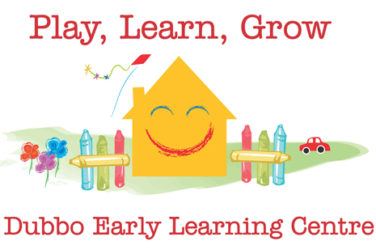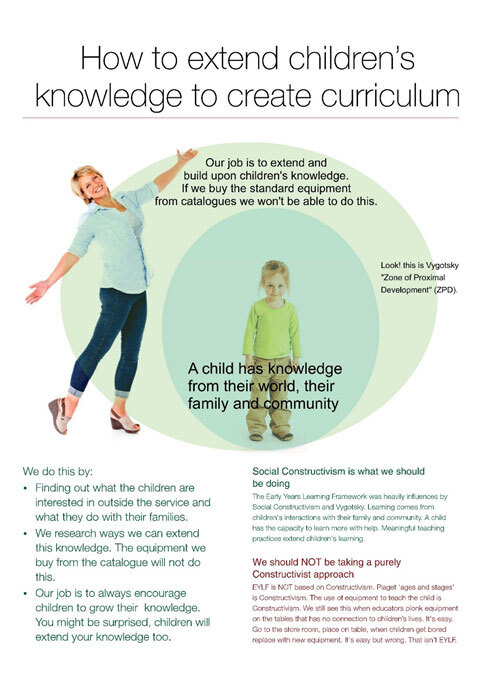Case Study: Daily Talking Points To Make Your Service Better
A service wanted to measure what they were doing well and in what areas they could improve. This was in order to monitor their practices and assess whether educators were really living the service’s philosophy in their everyday practice.
The service created Daily Talking Points that all staff in the service reflect on daily to ensure that their practices are meeting the standards of the service’s philosophy. Instead of putting a negative spin on things that the service wasn’t achieving, they wrote everything in a positive manner. This way they became goals to achieve rather than problems that needed addressing.
The service printed one set of points at a time and talked about them during their day. The educators tried to change their practice by implementing the points and sharing with other educators within the room and service how they were implementing the ‘Talking Points’.
Remember educators can’t always see where they can improve and may need some assistance from you by demonstrating, guiding and practicing with them. For example:
| What the Room Leader observed that needed improving within the room | How the Room Leader communicated the improvements to educators in a positive way |
|---|---|
| Our environment is sometimes set up for what’s best for the educator and not the children | Creating enriched learning environment
|
| Educators have been wearing tights to work and not the uniform pants | Our professionalism is always on show
|
| Educators don’t take enough time to explain a child’s day to family members | Our Families are Our Most Important Asset
|
| We don’t always realise that we are here to run a business that needs to make money to cover costs such as wages and superannuation | We know we have three very distinct roles
|
| Occasionally a broken piece of equipment is overlooked | We create the safest service
|
| Educators are not doing well implementing EYLF | We implement EYLF
|
| Educators aren’t completing paperwork correctly | Our documentation is always completed on time
|
| Educators sometimes miss opportunities to extend learning | We are always ready to teach
|
| Educators are possessive of “their” programming ideas, rather than celebrating them as an achievement for the room | Educators share their EYLF experiences with other educators as part of our professional development
|
| Cleaning rosters aren’t always adhered to | Cleanliness of our environment is a part of our success
|
| Educators are shy to answer questions about the service on the phone or in person | What We Do All Day Counts In Growing Our Business
|
| Educators could know our policies and procedures better so they can answer their own questions | We Measure Our Ability To Perform Against The Regulations, NQS and the Policies
|
| Too often, new Educators are left to figure things out for themselves. We need a better Induction procedure. | Valuing New Educators
|
| Educators aren’t paying enough attention to what’s going on in the service | All Of Us At the service Know a Lot About Our Service and Local Community
|
| Families could be more involved in the service | We Are Proactive In meeting Expectations Of Our Families and Community
|
| Taylor’s mother complained about finding paint all over his jumper in his bag. She didn’t care about the jumper but no one told her when she picked him up for the day. | We Handle All Damages And Loss To Children's Property Promptly
|
| A child wearing nappies is brought to the service regularly in his nappy from the previous night. Adele is always still hungry after she has eaten what’s in her lunchbox. It’s not enough. | We inform parents about our expectations regarding children's health hygiene and wellbeing.
|
| The educators are embracing EYLF and getting better at it. | We are “The Very Best Educators …. Guaranteed”
|
| There are sometimes harsh words exchanged between our office staff and the educators. They each believe they’re more important | We are always positive about our work, our service, our families and our educators
|
| Educators keep quiet about things that could be improved | We always represent the service
|
| The families aren’t aware of our policies and procedures | We orientate our families to the service’s practices and procedures
|
| We could be more respectful of our employees. They are referral networks for the service too | We treat all of our employees like customers
|
| We could incorporate more of the children’s cultural backgrounds into our service | We are respectful of each family’s values and culture
|
| Educators don’t follow procedures when equipment breaks | We do a risk management of all environments children will be in
|
| A new parent commented that our service is a bit dirty and the toys look old | We maintain all of our equipment and the service in good repair
|
| We don’t need to stop just because the job is done. We need to keep learning and improving | “Good Enough Never Is”
|
| Nice comments we hear from grateful parents don’t always get passed on to all educators | We are proud of our team
|







